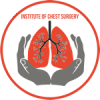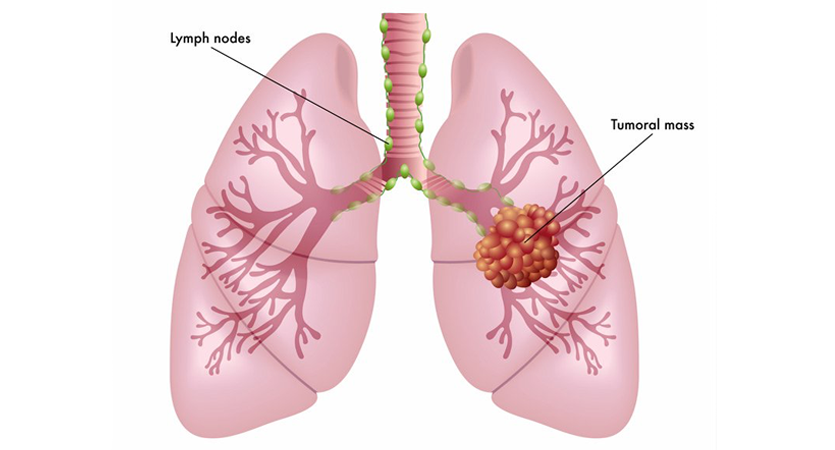What are the Different Stages of Esophageal Cancer?
Esophageal cancer is a formidable disease that affects the esophagus, the hollow tube that carries food and liquids...
+919999461292
MBBS | DNB (General Surgery, Gold Medalist) | DNB (Thoracic Surgery, Gold Medalist)
Thoracic & Lung Transplant Surgeon | Medanta – The Medicity, Gurugram

MBBS | DNB (General Surgery, Gold Medalist) | DNB (Thoracic Surgery, Gold Medalist)
Thoracic & Lung Transplant Surgeon | Medanta – The Medicity, Gurugram


Esophageal Cancer: Understanding a Serious Digestive System Malignancy
Esophageal cancer, also known as esophageal carcinoma, is a malignant tumor that develops in the esophagus, a muscular tube responsible for transporting food and liquids from the mouth to the stomach. The esophagus is a vital part of the digestive system, and esophageal cancer is a serious condition that can significantly impact a person’s health and well-being.
See, Esophageal Cancer develops in your food pipe (esophagus). Think of it like pipe getting blocked from inside. Early detection is very important for better treatment outcomes.
This happens because the tumor narrows your food pipe. Initially the problem starts with solid food, then liquids also become difficult. That’s why many patients lose weight before diagnosis.
Treatment depends on the cancer stage. Usually we need a combination of treatments – surgery, chemotherapy, radiation. Sometimes we give chemo-radiation before surgery to shrink the tumor.
We usually do minimally invasive surgery using VATS or robotic surgery technique. In this surgery, the food pipe with the cancer is removed and the food-tract is reconstructed by pulling the stomach tube into the chest or neck and joining with the remaining food pipe. Don’t worry, we use very advanced techniques.
First few days, feeding through a tube. Then slowly start with liquids, soft diet, and finally normal food. Process usually takes 1-2 weeks. Our dietitian will guide you properly.
Usually 7-10 days after surgery. If you’re getting chemo-radiation, might need shorter stays during treatment. Recovery time varies for each patient.
Survival rates have improved with modern treatments. Early stage cancers have very good outcomes. Rather than numbers, let’s focus on giving you the best possible treatment.
No, feeding tube is temporary – usually for few days/weeks after surgery. Once swallowing improves, we remove it. Some patients might need it longer during treatment.
Common side effects include fatigue, nausea during chemo, some swallowing difficulty. But we have good medicines to manage these. Everyone’s experience is different.
Yes, most patients return to normal diet. Might need to eat smaller, frequent meals initially. Our team will teach you proper eating techniques.
Usually 6-8 weeks after surgery for desk job. Physical work might need 2-3 months. During chemo, some patients continue working, some need more rest
No smoking or alcohol absolutely. Eat healthy, nutritious food. Light exercise as advised. Most important – regular follow-up and taking medicines properly.
We’ll monitor you carefully with regular check-ups. Risk of recurrence depends on many factors. That’s why completing full treatment and follow-ups is very important.
Initially soft, non-spicy food is better. Eat small portions frequently. Stay well hydrated. Our dietitian will give a detailed diet plan based on your recovery.
First year, every 2-3 months. Second year,onwards twice yearly if stable. But if any new symptoms develop, contact me immediately.
Note: Remember, treating Esophageal Cancer needs patience and proper care. My team and I are always here to support you through this journey. Don’t hesitate to ask any questions.
Esophageal Cancer: Understanding a Serious Digestive System Malignancy
Esophageal cancer, also known as esophageal carcinoma, is a malignant tumor that develops in the esophagus, a muscular tube responsible for transporting food and liquids from the mouth to the stomach. The esophagus is a vital part of the digestive system, and esophageal cancer is a serious condition that can significantly impact a person’s health and well-being.


The esophagus is a hollow, muscular tube that connects the throat (pharynx) to the stomach. It is approximately 8 to 10 inches long and sits behind the trachea (windpipe). Its primary function is to facilitate the movement of food and liquids from the mouth to the stomach during the process of swallowing. The esophageal walls contain layers of smooth muscle that contract in coordinated waves, called peristalsis, to propel the swallowed contents downward.
There are two main types of esophageal cancer, each arising from different cell types in the lining of the esophagus:
– Adenocarcinoma: This type of esophageal cancer develops in the glandular cells that produce mucus in the lower part of the esophagus. Adenocarcinoma is more commonly associated with a condition called Barrett’s esophagus, which results from chronic acid reflux (gastroesophageal reflux disease or GERD) that damages the normal lining of the esophagus.
– Squamous Cell Carcinoma: This type arises from the squamous cells that line the upper part of the esophagus. It is more commonly associated with risk factors such as smoking, excessive alcohol consumption, and certain dietary and environmental factors.
Esophageal cancer is a relatively uncommon cancer, but it can be aggressive and have a high mortality rate. The incidence varies widely by geographic region and is more prevalent in certain parts of the world, such as parts of Asia and Africa.
Several risk factors are associated with the development of esophageal cancer:
– Chronic Acid Reflux (GERD): Long-term and untreated gastroesophageal reflux disease can lead to Barrett’s esophagus and an increased risk of adenocarcinoma.
– Barrett’s Esophagus: The presence of Barrett’s esophagus significantly increases the risk of developing adenocarcinoma.
– Smoking: Tobacco use, particularly smoking, is a major risk factor for squamous cell carcinoma of the esophagus.
– Alcohol Consumption: Heavy and prolonged alcohol consumption is a risk factor for both types of esophageal cancer.
– Diet: A diet low in fruits and vegetables and high in processed meats and certain chemicals may increase the risk of esophageal cancer.
– Obesity: Being overweight or obese is associated with an increased risk of esophageal adenocarcinoma.
– Age and Gender: Esophageal cancer is more common in people over the age of 50, and men are more likely to develop it than women.


Esophageal cancer may not cause noticeable symptoms in its early stages, which can make early detection challenging. As the disease progresses, common symptoms may include:
– Difficulty swallowing (dysphagia): Initially, swallowing solid foods may be more difficult than swallowing liquids.
– Unintended weight loss: Often due to reduced food intake because of difficulty swallowing.
– Chest pain or discomfort: May occur as the tumor grows and puts pressure on surrounding structures.
– Persistent cough or hoarseness: Resulting from tumor involvement in the respiratory tract.
– Frequent regurgitation of food: Food may come back up into the mouth after swallowing.
– Pain or discomfort in the throat: Particularly when eating or drinking.
– Coughing up blood: In advanced stages, bleeding from the tumor can lead to coughing up blood.
If esophageal cancer is suspected, a comprehensive evaluation is necessary, including a review of the patient’s medical history, risk factors, and symptoms. Diagnostic tests commonly used include:
– Endoscopy: A thin, flexible tube with a camera (endoscope) is inserted through the mouth to examine the esophagus, obtain tissue samples for biopsy, and visualize the tumor.
– Biopsy: During endoscopy, tissue samples are collected from the suspicious area and examined under a microscope to confirm the presence of cancer cells.
– Imaging Studies: Computed tomography (CT) scans, positron emission tomography (PET) scans, and other imaging tests help determine the extent of the tumor and whether it has spread to nearby lymph nodes or other organs.
Staging is a critical step in determining the extent and severity of esophageal cancer, guiding treatment decisions, and estimating prognosis. The most commonly used staging system for esophageal cancer is the TNM system, which evaluates the size of the primary tumor (T), lymph node involvement (N), and the presence of distant metastases (M).
Esophageal cancer prognosis varies significantly based on the stage at diagnosis, tumor type, and the patient’s overall health. Unfortunately, esophageal cancer is often diagnosed at advanced stages, leading to a lower overall survival rate compared to some other cancers. However, advances in research and treatment have led to improved outcomes for certain cases, particularly when diagnosed at earlier stages.
The treatment approach for esophageal cancer depends on the cancer stage, type, and the patient’s overall health and preferences. The main treatment options include:
– Surgery: Surgical removal of the tumor and nearby lymph nodes is the primary treatment for early-stage esophageal cancer.
– Radiation Therapy: Radiation therapy may be used before or after surgery to shrink the tumor or destroy any remaining cancer cells.
– Chemotherapy: Chemotherapy is often used in combination with radiation therapy (chemoradiotherapy) before surgery to increase the chances of successful tumor removal.
– Targeted Therapy: Some esophageal cancers may respond to targeted therapies that specifically target certain molecules or pathways involved in cancer growth.
– Immunotherapy: Immunotherapy has shown promise in treating certain types of advanced esophageal cancer by enhancing the body’s immune response against cancer cells.
– Palliative Care: Palliative care focuses on managing symptoms and improving the quality of life for patients with advanced esophageal cancer.
While not all cases of esophageal cancer can be prevented, certain lifestyle modifications can reduce the risk of developing the disease. These include:
– Quitting smoking: If you smoke, quitting is one of the most effective ways to reduce the risk of esophageal cancer.
– Limiting alcohol consumption: Reducing or avoiding excessive alcohol intake can lower the risk of developing esophageal cancer.
– Maintaining a healthy diet: Consuming a balanced diet rich in fruits and vegetables and avoiding processed meats and chemicals may help reduce the risk of esophageal cancer.
– Managing GERD: Treating and managing chronic acid reflux can help prevent the development of Barrett’s esophagus and reduce the risk of esophageal adenocarcinoma.
A diagnosis of esophageal cancer can be emotionally challenging for both patients and their families.
Esophageal cancer is a formidable disease that affects the esophagus, the hollow tube that carries food and liquids...
Esophageal cancer is a formidable and often challenging disease that affects the esophagus, the muscular tube that carries...
Esophageal cancer is a challenging and potentially life-threatening condition that requires timely diagnosis and appropriate treatment. When esophageal...
Esophageal cancer is a serious and potentially life-threatening disease that affects the esophagus, the muscular tube that carries...
Esophageal cancer is a formidable adversary that can silently develop within the esophagus, the muscular tube connecting the...
Esophageal cancer is a serious and potentially life-threatening condition that affects the esophagus, the muscular tube responsible for...


MBBS | DNB (General Surgery, Gold Medalist) DNB (Thoracic Surgery, Gold Medalist)
Thoracic & Lung Transplant Surgeon
Medanta – The Medicity, Gurugram
An esteemed thoracic surgeon, excels in minimally invasive procedures (VATS & Robotic surgery) for both benign and malignant lung conditions. With a stellar academic background and international training, he is dedicated to offering compassionate and expert patient care.

Website designed and Developed with ❤️ by GigaWebZone
Copyright © 2023 All rights reserved.
WhatsApp us